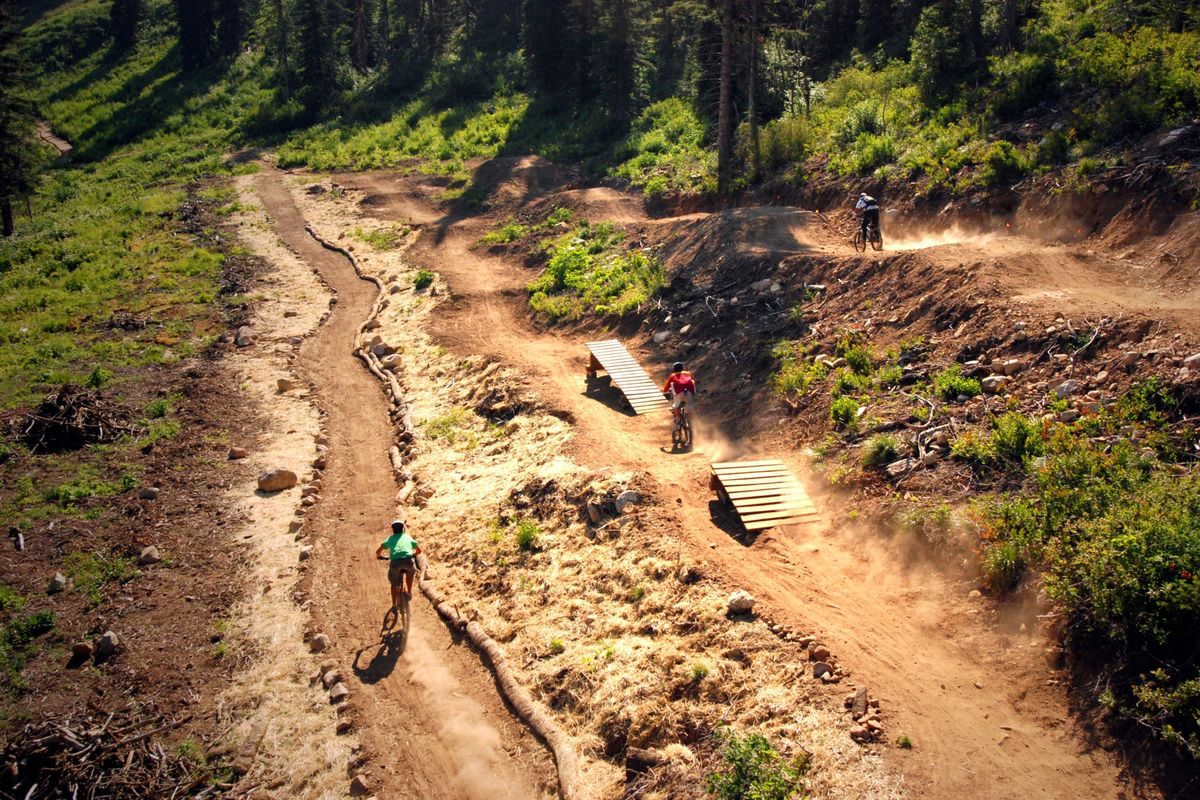Fat tire flings
Savvy resorts peddle themselves as destinations for mountain bikers

Droves of tourists head to Taos, N.M., every summer, ready to take in the area’s art galleries, pioneer history and American Indian influence. This is the place that inspired artists such as Georgia O’Keeffe and Ansel Adams.
However, another group of tourists is bypassing the galleries and museums in favor of trails along the rim of the Rio Grande gorge and forested ribbons of singletrack high in the surrounding mountains.
Doug Pickett, a longtime cyclist and owner of Taos Cyclery, said almost half of the calls he gets are from out-of-towners wanting to know about the area’s most popular singletrack, a trail that was blazed more than a century ago by sheepherders who traversed the Sangre de Cristo Mountains.
“People call from Texas, California and all over the place saying ‘We’re going to do Taos in a couple of weeks and I’ve heard about South Boundary,’ ” Pickett said.
Greg Moretti was living on Saipan in the South Pacific a few years ago when he and his friend planned a week of riding in the mountain-bike meccas of the American West — Moab, Utah, and Fruita, Colo. — to train for an eight-day race in South Africa. Taos was worked into the trip after he’d heard it was a “must ride.”
“Of all the riding we did on our weeklong road trip, the South Boundary Trail was probably the most memorable ride,” said Moretti, who now lives in San Francisco. “In the fall, the mountains and bright yellow aspens backdropped by the blue New Mexico sky were absolutely spectacular and unforgettable.”
Northern New Mexico has managed to keep itself out of the mountain-biking spotlight, but those who have ridden South Boundary and the hundreds of miles of other singletrack and old forest roads in the area say the potential is limitless.
“In Taos, everything is in place,” Gearing Up Bicycle Shop owner Rey Deveaux said, referring to the region’s alpine and high desert terrain. “All they need to do is tap into it.”
Taos is also known for its skiing and whitewater rafting. As many as 1 million visitors pass through each year, according to officials at the Taos County Chamber of Commerce and Visitors Bureau.
“A big component of what makes Taos what it is is the culture and the history, including the galleries and museums and of course Taos Pueblo. But another big component is the outdoor recreation,” said Steve Fuhlendorf, chief executive officer of the Chamber of Commerce.
Cycling is undoubtedly a source of tourist revenue. According to the Outdoor Industry Foundation, cycling contributes more than $130 billion each year to the U.S. economy and supports about 1 million jobs across the country.
Locals say South Boundary would be an easy place to start the marketing campaign.
Deveaux likens the fascination with the trail to that of mountain climbers obsessed with conquering the highest peaks.
“There are people all over the country who search out trails and they come down here after hearing about it,” he said. “It’s got this mystique, plus it’s one of the more beautiful trails as far as vistas.”
But it’s no cruise through Central Park.
A grueling climb leads to the start of South Boundary and it has its share of “baby heads,” chunks of granite that are ready to steal the momentum out of every pedal stroke.
All this vigorous exercise is above 10,000 feet.
The lung-searing effort is rewarded with an epic downhill through tight stands of spruce and aspen that’s reminiscent of the speeder bike chase in “Star Wars: Return of the Jedi.”
It’s rare to find that much singletrack that’s mostly downhill, Pickett said.
On the north side of the ski valley, Roger and Kerrie Pattison are taking advantage of the steep slopes and incredible views on their property to lure bikers. They have developed more than two dozen miles of trails and play host each year to Frazer Mountain Madness, two days of racing centered on a 5-mile haul to the top of the 12,163-foot mountain.
Along the Rio Grande gorge, there are more trails popping up that wind through sagebrush and pinyon pine and juniper-dotted hills. A few steps off the Horse Thief Trail and riders can see 600 to 800 feet down to the bottom of the gorge.
Another trail is planned near Questa through the Guadalupe Mountains, and downhillers are already familiar with the trails in nearby Angel Fire.
Deveaux said the region is a mystical place, but hasn’t gotten the publicity like Moab and other mountain-biking meccas.
“Right now, I think it’s just in its beginnings,” he said. “I think it’s just a matter of time before it makes a breakthrough and people realize that it’s a destination where you can go and ride.”